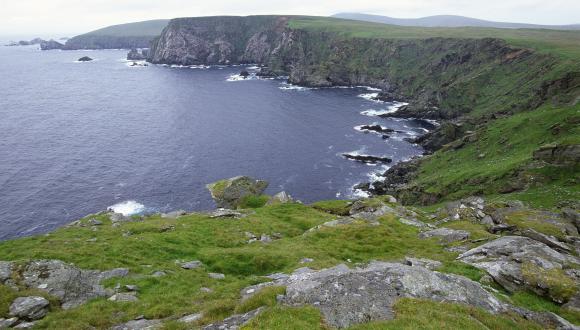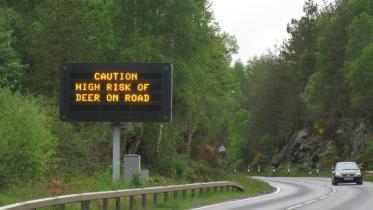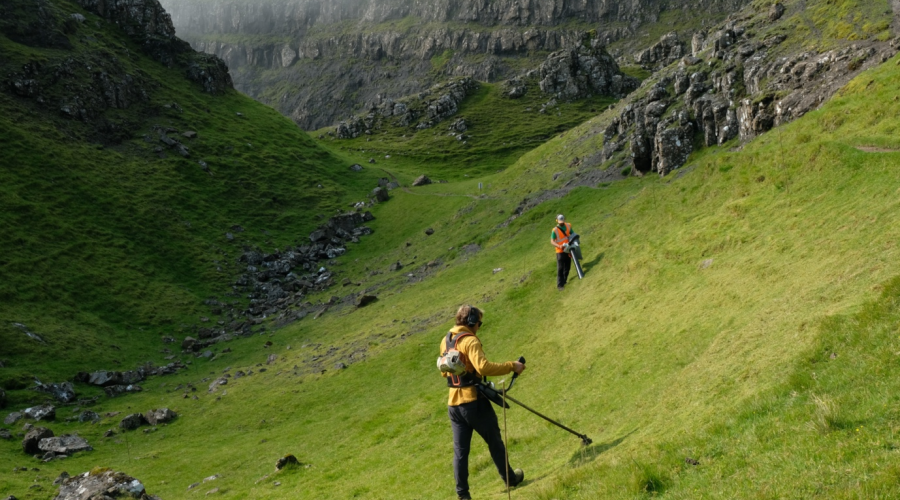
Picture this
02 September 2022
Asked to list some of the most photographed sites in Scotland chances are you would mention the Old Man of Storr, Quiraing and Fairy Pools on Skye. Their enduring popularity inevitably creates visitor pressure, and explains why action was needed to tackle issues around increasing tourist numbers. It also afforded an opportunity to make these iconic sites more accessible.
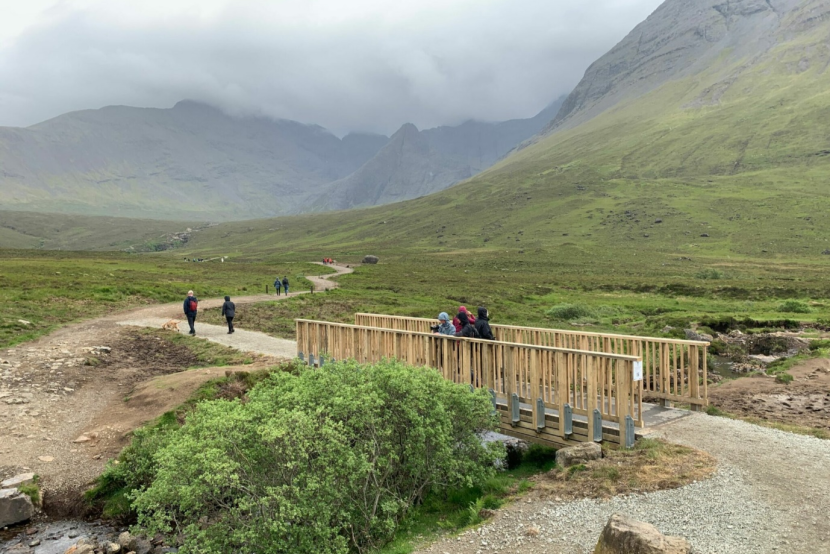
Popularity and the boost it gives to tourism is a good thing. It’s a big element of Scotland’s economic story, but with increased footfall comes increased pressure on access routes to and from sites. All three of Skye’s iconic natural landmarks were showing visible signs of strain and the Skye’s Iconic Sites Project is all about tackling the issues.
Organised by the Outdoor Access Trust Skye (OATS), and supported by a local partnership, the project is big and as a consequence needed big pockets, hence the fact that the Natural and Cultural Heritage Fund is meeting 70% of the costs which has been great news for everyone involved.
If you have visited the Quiraing in recent years you won’t need convincing of the need to address erosion and access issues. Parking was becoming a real issue and ad-hoc parking had simply damaged verges and created unsightly scars on this fragile landscape. Similarly the constant footfall to and from the best viewpoints was leaving desire lines which hastened erosion.
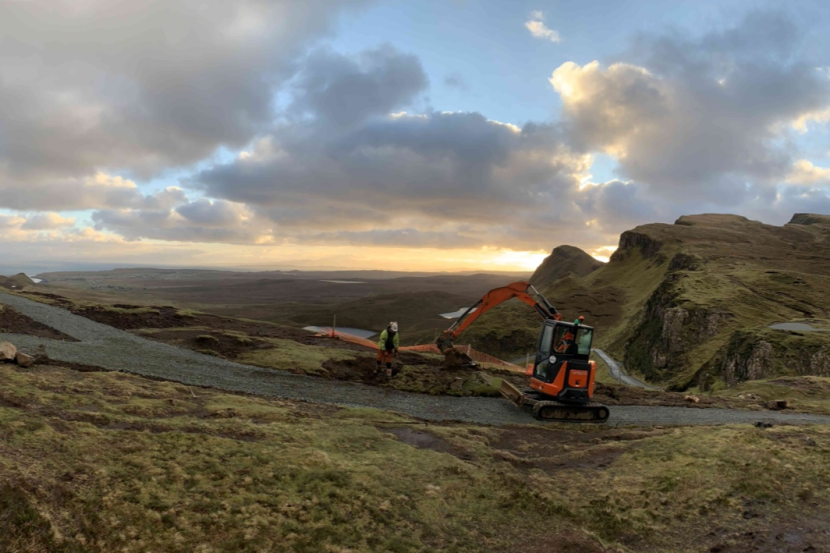
That’s all a thing of the past now. Just under 300m of path has been laid, the car parking facilities, although outwith the scope of the NCHF funding, greatly improved and interpretation panels will be refreshed. The once battered verges are covered in new turf and the healing process is underway. On May 13 of this year local MSP Kate Forbes officially opened the new infrastructure, including a 50m stretch which draws visitors out to a stunning viewpoint.
Eileen Stuart, Deputy Director for Nature & Climate Change at NatureScot, was amongst those delighted to see this work completed. “It’s wonderful to see this renowned path is now restored and open,” she commented. “We continue to support the Skye Iconic Sites Project in the work to improve the quality of the visitor experience at the popular locations of the Quiraing, the Fairy Pools and the Storr. Through our Natural and Cultural Heritage Fund, we encourage sustainable visitor management and employment opportunities in remote and rural areas.”
The work at the Fairy Pools is if anything even more ambitious. This is a trickier site to reach and involved a trek to the foot of the Black Cuillin from Glenbrittle. Almost inevitably the scar that a stream of eager visitors created was widening in the fragile landscape. The biggest difference you will notice now are two brand new bridges which avoid an increasing risk of taking an early dip and make the access much simpler and defined for a range of visitors.
The work behind the Fairy Pools improvement began back in 2017 when the local
Minginish Community Hall Association joined forced with OATS to address the issues. It is easy to see why they were moved to action. By 2017 close on 80,000 visits to the Fairy Pools were being logged, two years later that number had soared to 180,000. The vast bulk of those visitors were arriving via a single-track road which was a frequent congestion issue for local residents, and on occasion even impinged on the response ability of the emergency services.
A Community Asset Transfer scheme saw the land shift ownership from Forestry and Land Scotland to OATS, with a 20 year lease on the basis of OATS undertaking to maintain the site and new facilities.
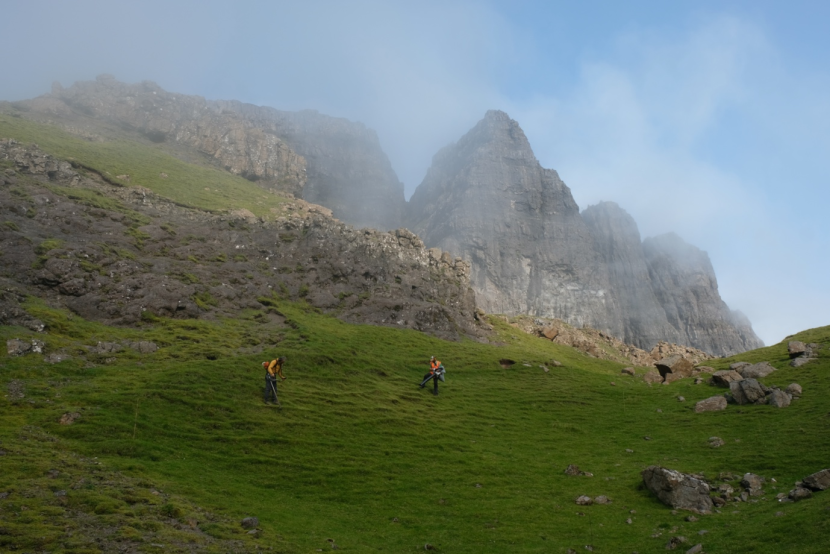
Habitat restoration is to the forefront of work at the third site, in Trotternish — the famously jagged Old Man of Storr. Dougie Baird, the energetic Chief Executive Office at OATS, takes up the story “Skye is a global destination for international visitors”, he acknowledges “They are keen to experience and relish in its beauty but, as we’ve seen many times before, an increase in visitor numbers comes at a cost. As an environmental organisation we aim to protect and develop the incredible sites Skye has so the public can enjoy everything the island has to offer, sustainably.
“At Storr we have an exciting opportunity to learn more about the land on one of Skye’s most famous and busiest walking routes. The seed collection we carried out in 2021 is the first step in allowing us to capture the information we require in order to successfully restore the land and offer a solution that works for everyone. We can’t wait for the restoration to get fully underway.”
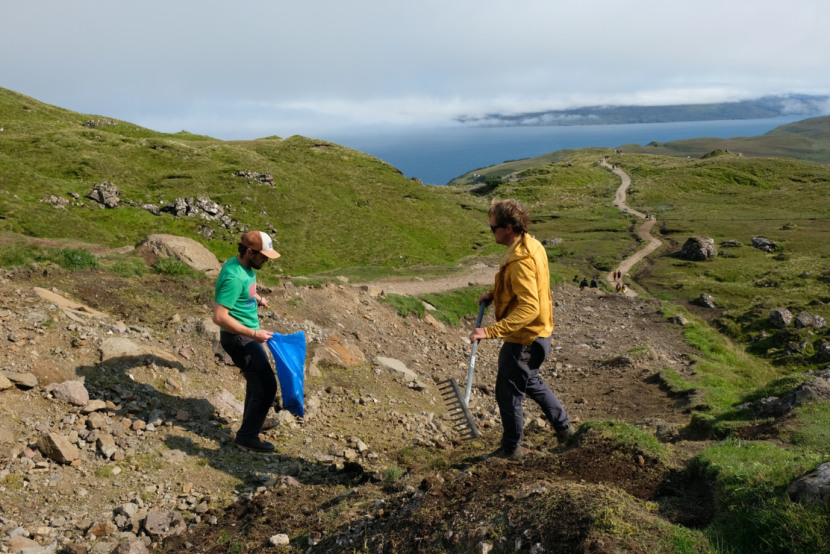
Alex Turner, of NatureScot is based at our Skye office and is passionate about the value of all the projects and in particular the Old Man of Storr work. “I’ve become more hands-on than I initially intended,” he concedes. “Getting contractors has been a challenge, as was hiring a consultant ecologist, so I am ending up providing the ecological advice and supporting the Clerk of Works. Last year we ran a series of trials collecting seed from the species rich grassland.
“The material gets cut by a strimmer from a nearby area of healthy grassland, vacuumed up and spread by hand in the damaged areas. We’ll be doing some more of that work this autumn.
“It’s all species rich calcareous grassland in this area and the key indicator species are thyme and alpine ladies mantle. We will end up with a range of species but these are the two we are focusing on. Thyme gives this amazing smell when cut, and that distinctive smell lets you have got the right species in the bag.
“It isn’t just straightforward seed sowing either, we have to simultaneously sort out soil erosion and drainage issues. We are trying to redirect the surface water so that it disperses rather than channelling down the path lines. We will also be re-profiling some of the most damaged areas to create small dams to slow up the water. Spot-turfing will create small islands of vegetation which can spread out and colonise bare ground. We’ll also be using lots of geojute to hold the soil and plants in place until they have a chance to stabilise the ground. By that point the jute will biodegrade. Full recovery is likely to be a slow process in this exposed location but we’re putting sound foundations in place to get a recovery underway."
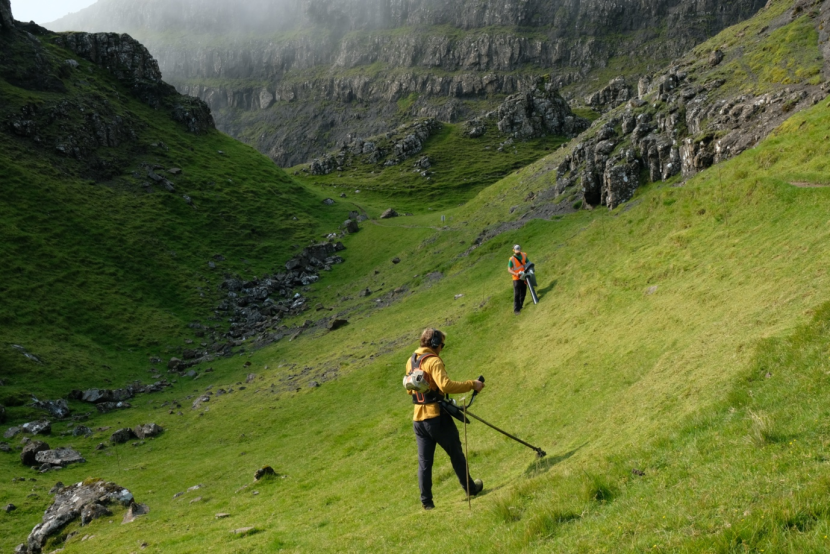
The Skye Iconic Sites Project is part of a near £9 million Scottish programme of projects to invest in the Highlands and Islands to provide more and better quality opportunities for visitors to enjoy natural and cultural heritage assets.
Given the enduring popularity of Scotland as a holiday destination, the central role of tourism in our economy, and the ease with which visitors can reach Skye’s iconic sites, money is certainly a big part of the project – but so too is an understanding of the bigger picture.
Notes:
The Natural & Cultural Heritage Fund is part of the Scottish Government’s current European Regional Development Fund (ERDF) programme, which runs through to 2023. This is one of two ERDF Strategic Interventions led by NatureScot – the other is the Green Infrastructure Fund.
You can follow the European Structural Funds blog for ESF activities, news and updates. For twitter updates go to @scotgovESIF or use the hashtags #ERDF and #europeanstructuralfunds

Partnership working:
Readers will be interested to note that SGRPID (Scottish Government Rural Payments and Inspections Directorate) funded the car park improvements at Quiraing, whilst the RTIF (Rural Tourism Infrastructure Fund) funded path improvements at Storr. That path work is an essential first step to getting visitors onto well-built paths to assist progress on the restoration of the damaged areas. SGRPID have match-funded NCHF work at Storr and Quiraing (as landowner). The project is driven on the ground by the ‘Skye Iconic Sites Project’ – which includes Highland Council, Scottish Government Agriculture and Rural Economy, NatureScot, Outdoor Access Trust for Scotland, Skye Connect, Staffin Community Trust and Minginish Community Hall Association. Each partner has brought a valuable and distinctive set of skills to the table and clearly the transformative power of the partnership is far stronger than individual agency could have mustered.
